Hindu Buildings
I had the opportunity of correspondence with the great nationalist historian Late Purushottam Nagesh Oak. When I was in Mumbai, I was also a member of his Indian Institute of Historical Research. When I asked him what was your opinion on the demolition of Babri Masjid, he had written Om 786 in reverse, explaining that the invaders were never builders. They only changed the look of Hindu buildings like they changed Om to 786 (reverse in Arabic). He had said that the structure which was demolished was actually Shri Ram Mandir, only its appearance was changed to Babri Masjid.

Astu, I tried to know the truth of their words by visiting many mosques, tombs etc. built after breaking the temple school. I wandered and searched the most in Delhi Agra about the books written by him and found that his arguments and evidence were correct in at least 90% of the cases. He has described in detail some Hindu buildings/temples/pathshalas which are now called Muslim buildings/mosques in his books. Chief among them are:
1. Kashi Vishwanath alias Gyanvapi Mandir, Kashi - now Gyanvapi Mosque
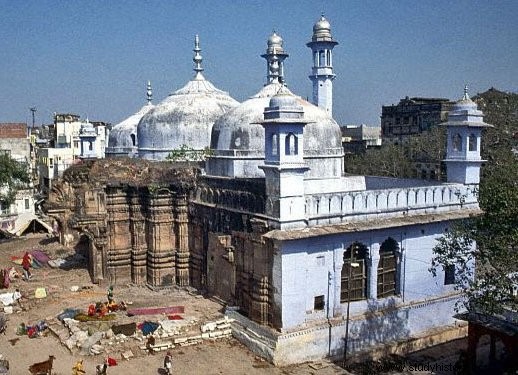
2. Shri Krishna Janmabhoomi, Mathura - now Idgah Masjid
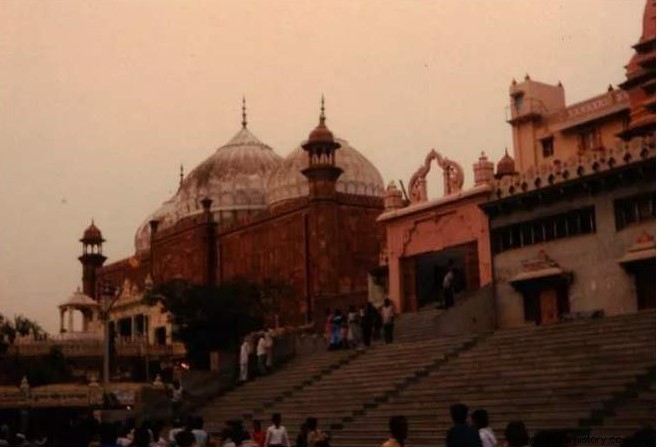
3. Lal Kot of Anangpal Tomar, Delhi - now Shah Jahan's Red Fort
Left historians say that the Lal Kot built by Anangpal Tomar was in Mihirpur and then declares the Vishnudhwaj at Mihirpur and the temples of that complex as Qutub Minar and mosque built by Muslims. Read Purushottam Nagesh Oak's book to know in detail. Red Fort of Delhi is Lal Kot.
4. Varahamihira's observatory Vishnudhwaja - now Qutub Minar
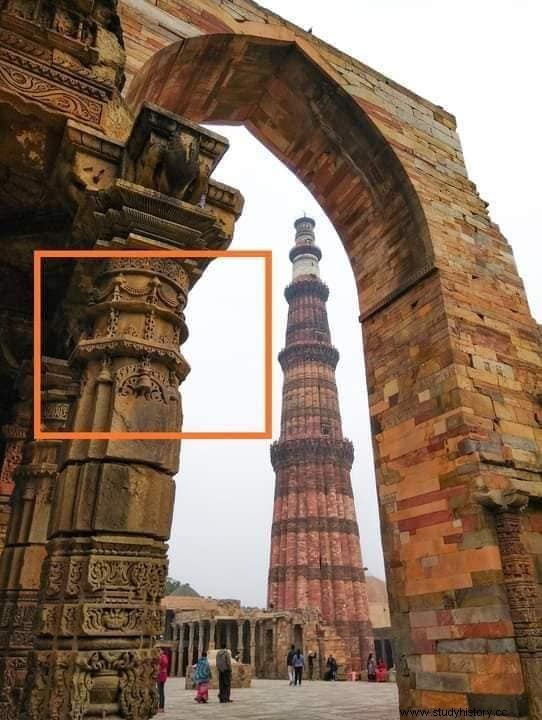
The so-called Qutub Minar and Alai Darwaza, the Alai Masjid is actually part of the Vishnu temple complex. The Alai Masjid is actually the ruins of the Vishnu temple which was destroyed by the Muslim invaders. Here there was a huge idol of Lord Vishnu sitting on the bed. Qutub Minar which is actually Vishnu Stambha or Dhruva Stambha was situated in the middle of a lake which was a symbol of Kamalnabha. Brahma ji was seated on the lotus flower above the pillar, which was destroyed by the Muslim invaders. A pool-like path was made to go from the temple to the pillar. Astronomer Varahamihira used this pillar as an observatory. The 27 temples here symbolized the 27 constellations. Even today the name of that area is Mehrauli after the name of Varahmihir.
British surveyor Joseph Begler, in his survey report, has not only declared the entire Qutub Minar complex as a Hindu building but has also proved it, but unfortunately the Government of India, the Archaeological Survey of India and the leftist historians have forcibly declared it as a Muslim. Joseph Begler's report Archaeological Survey of India; Report for the Year 1871-72
Available in the book Delhi, Agra, Volume 4, by J. D. Beglar and A. C. L. Carlleyle, which you can download at the link below, although the free PDF is not complete, it is better to buy and read.
https://www.forgottenbooks.com/en/books/ArchologicalSurveyofIndiaReportfortheYear187172_10019541
This huge temple was probably built by Chandragupta Vikramaditya, because the iron pillar here is of Chandragupta itself, it also shows from the inscription found from the excavation. Historian PN Oak has written that similar statue and temple of Lord Vishnu was in Mecca of Arabia, Vatican of Rome and England. The idol of Lord Vishnu is still kept in the museum of Spain.
5. Hindu Temple - Now Nizamuddin Dargah
Nizamuddin Dargah is an ancient temple damaged by Muslim invasions. Around this dargah innumerable other pavilions, ramparts, protruding parts of the fort wall, pillars, pillars can still be seen. These things prove that it was once a prosperous city which was demolished and conquered. Muslim mystics used to live in the areas destroyed by such destruction. After death he was buried where he lived - Historian Purushottam Nagesh Oak, Terrible Mistakes of Indian History
6. Hindu Rajprasad - Now Humayun's Tomb
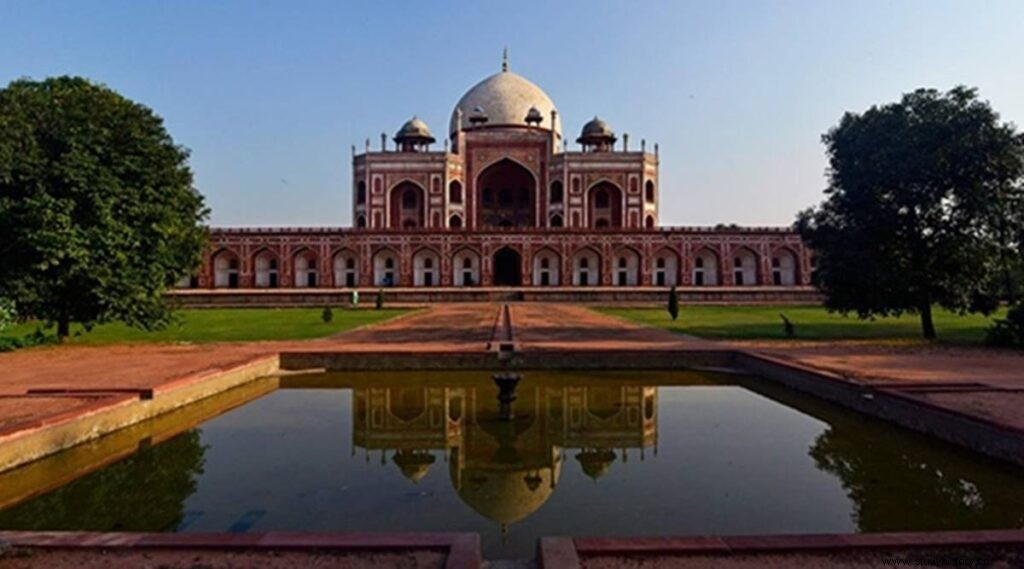
Humayun's tomb was part of the huge city mentioned above. This was the central royal palace of that city. Humayun lived in this acquired building. When Sher-Mandal fell from the steps of Purani Qila, he was brought here and it was here that he died. So he was buried here.
Cunningham has deliberately called it Humayun's tomb when it was actually a temple of Lakshmi. In the central hall of that building, a French man named G.Le.Bon saw Vishnu's feet made of marble around 1852. He has published a picture of Vishnu's feet on page 327 in his book The World of Ancient India. Cunningham uprooted the Vishnu symbol and made a fake tomb of Humayun there. Humayun is not buried in Delhi because according to Abul Fazal Humayun's grave is in Sirhind and according to Farishta Humayun was buried in Agra.
There is a Vedic Shakti Chakra at many places on the walls of this building. In the middle of this Shakti Chakra is the Lotus Chakra. (Great Mistakes of Indian History and History of Vedic Vishwarashtra Part-4)
7. Rajputi Bhawan, Delhi - Now Safdar Jung's Tomb
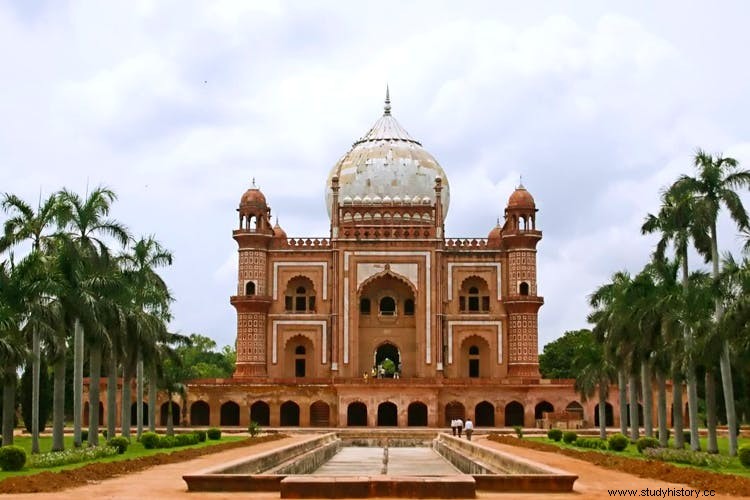
This building is completely built in the Rajputi style of Rajasthan. The building is surrounded by a security rampart with bastions on its sides and guard towers in the middle. The Prime Minister of Awadh was humiliated and expelled from Awadh, he was unemployed. Then who built such a grand mausoleum for him, when his place of residence is not known? (The terrible mistakes of Indian history - Purushottam Nagesh Oak)
8. Hindu Rajprasad - now Ferozeshah Kotla
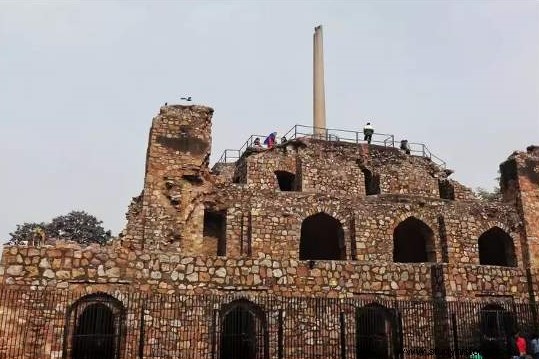
Firoz Shah is notorious for burning alive many idol worshippers. Then why would he put up the Ashoka Pillar of Hindus with a sermon? Actually Firoz Shah had tried to overthrow this pillar, it is clear from the broken head of the pillar but could not be uprooted because it would have destroyed the palace itself. It is possible that this palace is of Ashoka period and it may have been built by Ashok himself - the terrible mistakes of Indian history - Purushottam Nagesh Oak
9. Rajputi Bhawan - Now Lodhi's Tomb
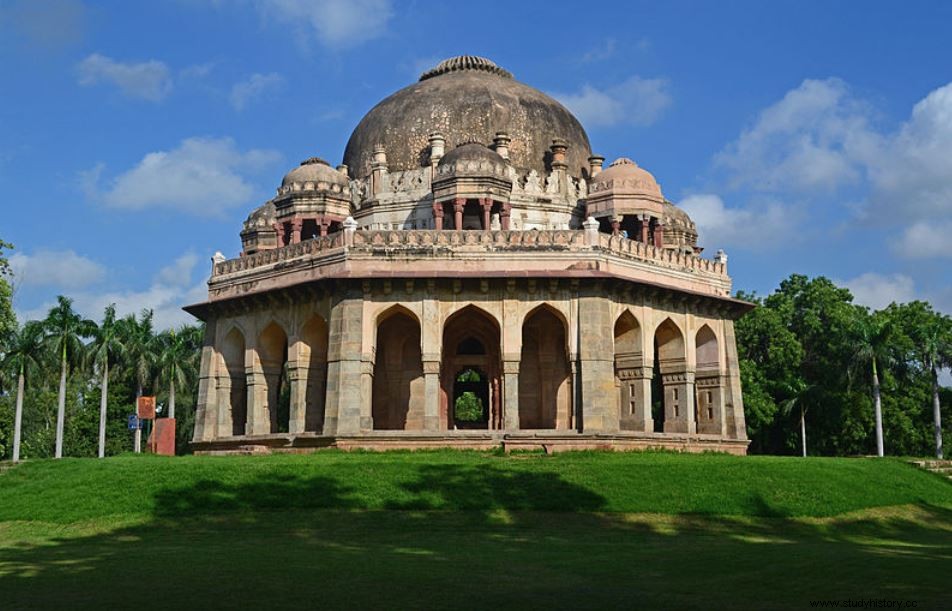
Lodhi's mausoleum is a Rajput building, buried there after his death - Horrific blunders of Indian history - Purushottam Nagesh Oak
10. Rajputi Mandap - Roshan Ara's Tomb
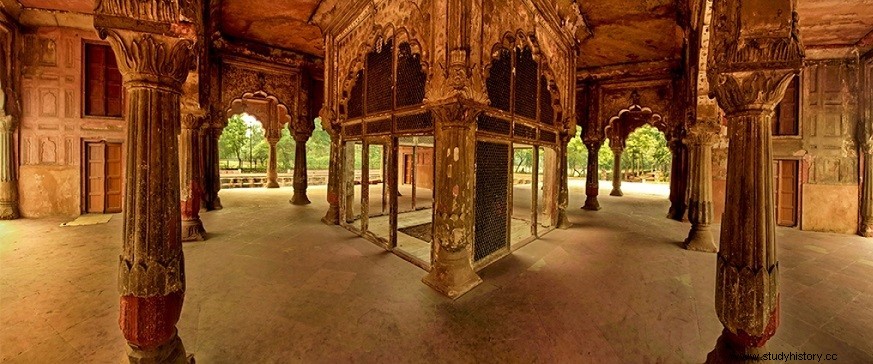
The entire construction style of this building is Hindu. Why would Aurangzeb, an anti-Hindu, build a Hindu style tomb? Roshanara's Tomb is a Rajputi pavilion that has been converted into a mausoleum - Horrific blunders of Indian history - Purushottam Nagesh Oak
11. Tejo Mahalaya, Agra - now the Taj Mahal
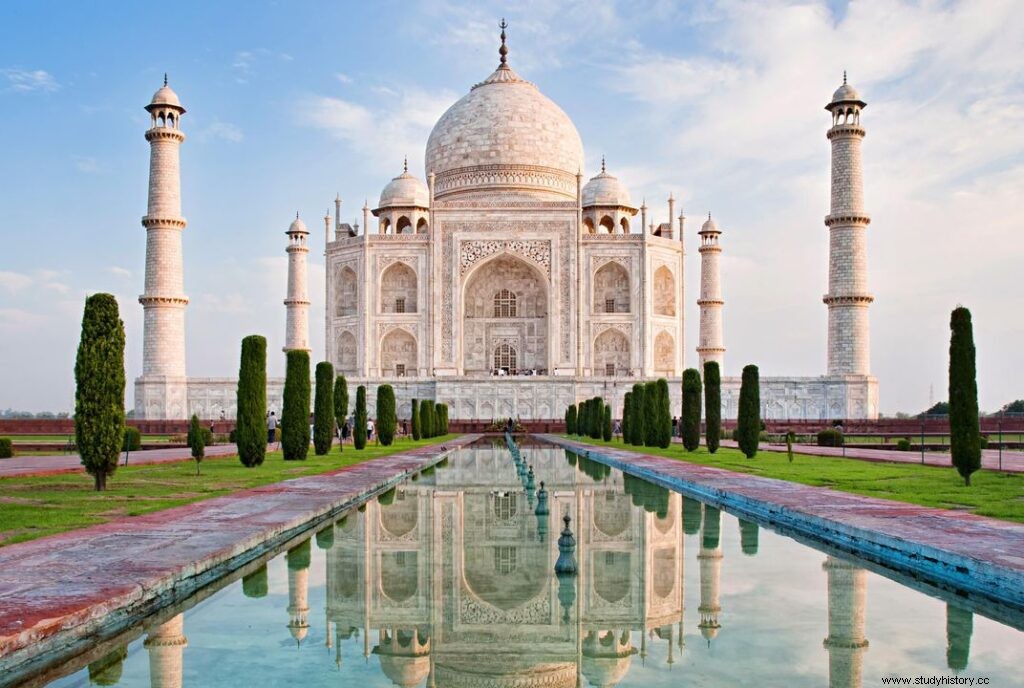
The Taj Mahal is actually Tejo Mahalaya. It was built by King Parmardin Dev of Agra Mathura in about 1155 AD. Page 403 of Volume 1 of Shah Jahan's court historian Abdul Hamid Lahori's book Badshahnama shows that this building was called Mansingh Bhawan at that time and Shah Jahan acquired it from Jai Singh, the grandson of Raja Mansingh. (The book by Purushottam Nagesh Oak is the Taj Mahal temple building etc.)
12. Rajputi Fort of Badalgarh, Agra - now Akbar's Fort

It is an ancient Rajput fort which is still known as Badalgarh Fort. But the leftist historians give the credit of rebuilding the Badalgarh fort as a lie to Akbar. To know in detail read Purushottam Nagesh Oak's book Agra Fort is a Hindu building
13. Rajputi Rajprasad of Fatehpur Sikdi - now Akbar's palace
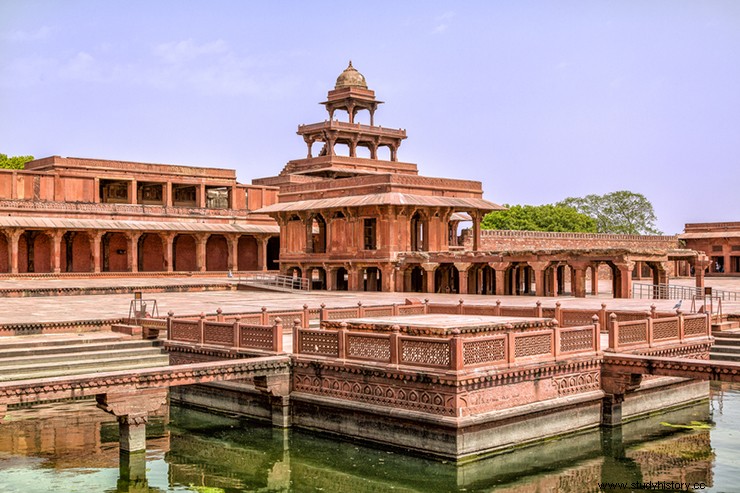
This is the building of Seekar Rajputs. It is completely built in Hindu temple and Jain temple style. To know in detail read the book Fatehpur Sikdi Hindu Bhavan Hai by Purushottam Nagesh Oak or visit it yourself. Even with the naked eye, this entire Hindu building, temple is visible only.
14. Allahabad Fort of Hindus - Now Akbar's Fort
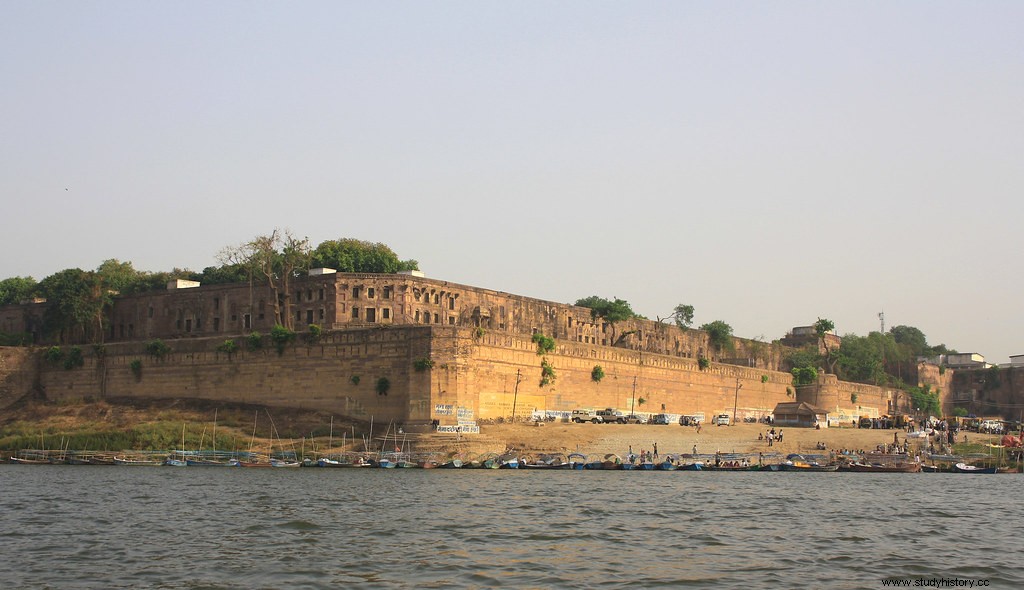
The Allahabad Fort existed centuries before Akbar. The existence of Ashoka Pillar, Pataleshwar Temple and Akshay Vat within the fort also proves that this fort is very ancient. When Emperor Harshavardhana used to come to the Sangam banks to donate, he used to stay in this fort. There was a very wide river ghat for bathing on the Sangam bank, which was broken by Akbar because thousands of religious-loving devotees, travelers used to come here throughout the year, due to which Akbar felt threatened. It has also been claimed in the memoirs of Shah Jahan that he destroyed 48 Hindu temples of Allahabad - terrible mistakes of Indian history - Purushottam Nagesh Oak
15. Bhadrakali Temple, Karnavati - Now Jama Masjid Ahmedabad
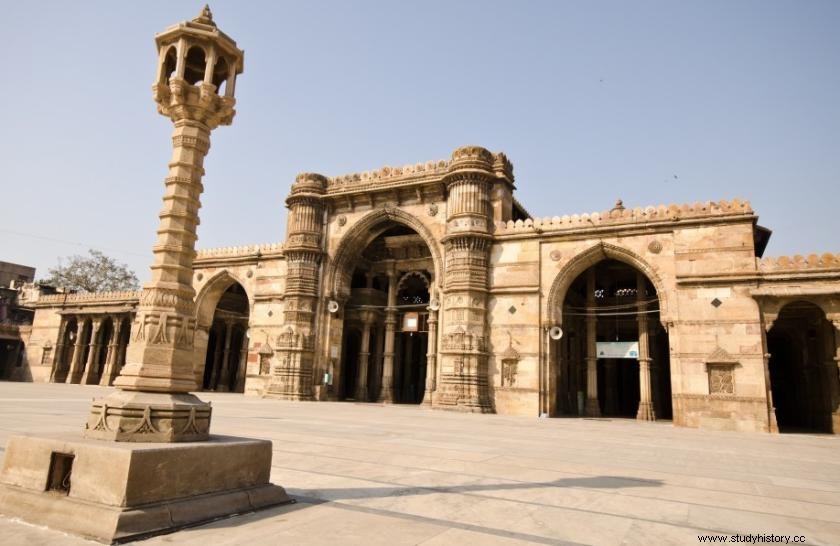
The main mosque of Ahmedabad, known as Jama Masjid, was the ancient Bhadrakali temple. That was the place of the worshiped goddess of the city. A large part of this temple is now used as a graveyard. Many Hindu signs such as flowers, chains, bells and windows are clearly visible from the sangarashi. One of the two rectangular peaks of the temple has been completely blown up, as could have happened only on the first entry into the city by the frantic Muslim conquerors - the terrible mistake of Indian history, Purushottam Nagesh Oak
16. Rudra Mahalaya Temple, Sidhpur, Gujarat - Now Jami Masjid
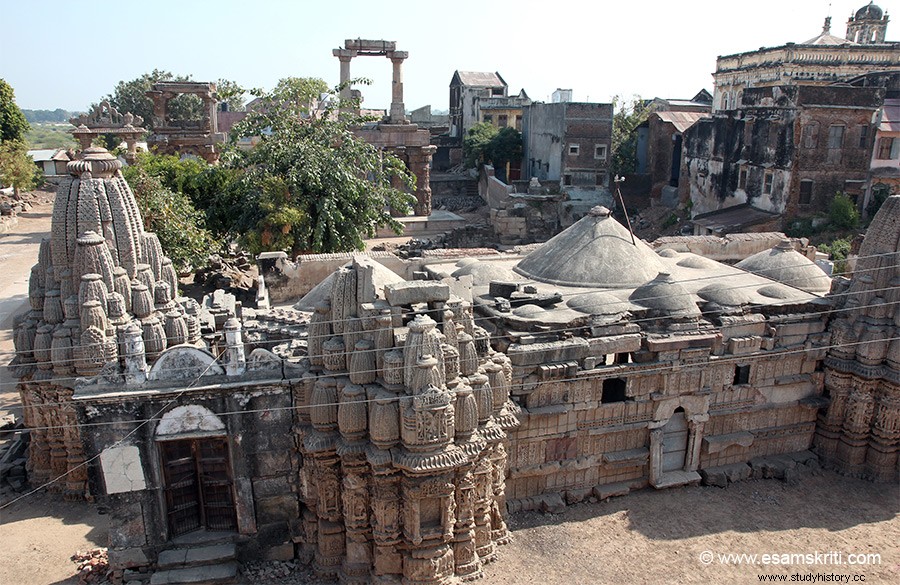
In 1414, Sultan Ahmed Shah of Gujarat appointed an officer to destroy Hindu temples throughout his kingdom. He completed this task very successfully. The following year, the Sultan himself went to Siddhapur and demolished Siddharaj's famous Rudra-Mahalaya temple and then converted it into a mosque. The reign of the infamous tyrannical tyrant Shah Mahmud Varghara was yet to begin. (Ashok Kumar Majumdar, Caravan Patrika, Aug-1959)
17. Delhi's largest Hindu temple - now Jama Masjid
Jama-Masjid located in Old Delhi is also a hijacked Hindu temple. Muslims like Ibn Battuta, Taimurlang etc. have clearly written that this temple was - the terrible mistake of Indian history, Purushottam Nagesh Oak
18. Temple of Vagdevi Dhar - now Kamaluddaula Mosque

This temple was established in 1034 by the great King Bhoj among the Paramara Kshatriyas who were endowed with qualities like scholar, musician, litterateur, poet etc. Many of his works are still available. He was a great devotee of Maa Saraswati. He had established the temple of Vagdevi in his capital Dhar.
A few years ago, when some part of this so-called mosque was uprooted and fell down, Sanskrit dramas were seen engraved on its stone panel. Now this truth has been established that the monument named Saraswati Kanthabharan was in the form of a unique library of Sanskrit literature. The fulfillment of Vagdevi established in this temple is kept in the British Museum.
19. Rajputi Mahal - Now Akbar's Tomb

Historians say that it was the palace of Sikandar Lodhi before Akbar was buried here. But it was not even built by Sikandar Lodhi, it was also a Rajputi building acquired. Vincent Smith says that Akbar's last rites were performed in a very confidential and unveiled form. Which proves that he was buried where he died after his illness - Purushottam Nagesh Oak's book Terrible mistakes of Indian history
Additionally:
20. Indranarayan Mandir - Now Deval Masjid

This temple was built by Rashtrakuta king Indra in the 10th century, which was demolished in the 14th century by Mohammed bin Tughlaq and converted into a mosque. Left historians shamelessly describe it as a unique specimen of Hindu-Muslim architecture.
21. Bindu Madhav Temple, Varanasi - Now Alamgir Mosque
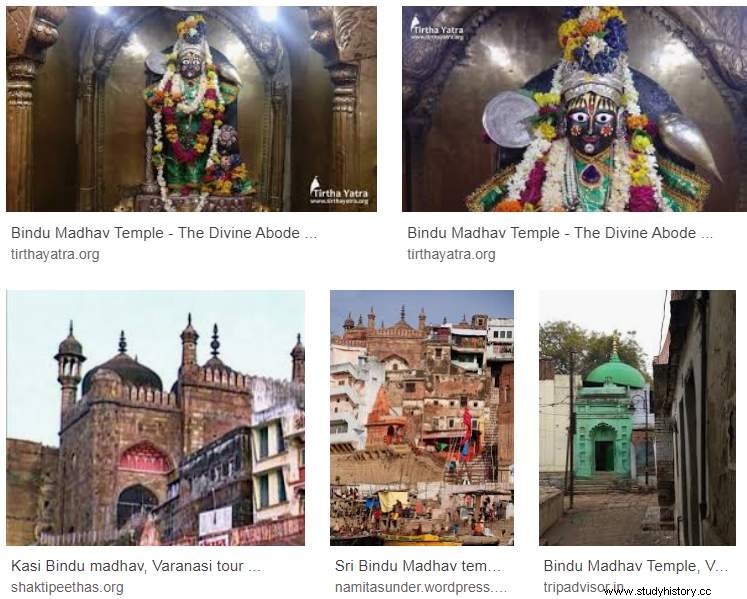
22. Arathali Temple, Kerala - now Cheraman Juma
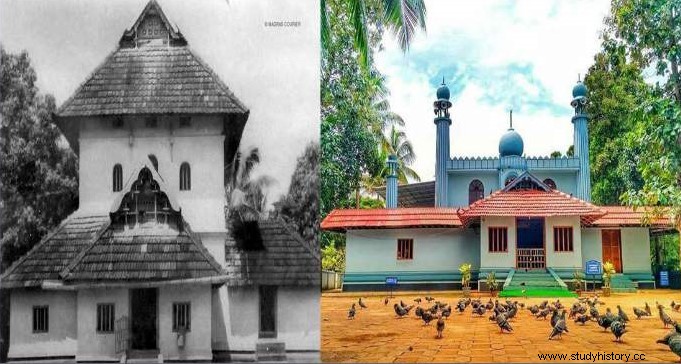
23. Adinath Temple, Malda - now Adina Masjid
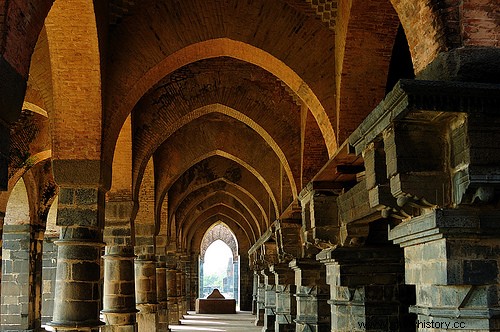
Situated in Pandua, West Bengal, this temple was a Shiva temple, which was demolished by Sikandar Shah in the 14th century and converted into a mosque.
24. Saraswati Mandir, Ajmer - now a two-and-a-half-din's hut
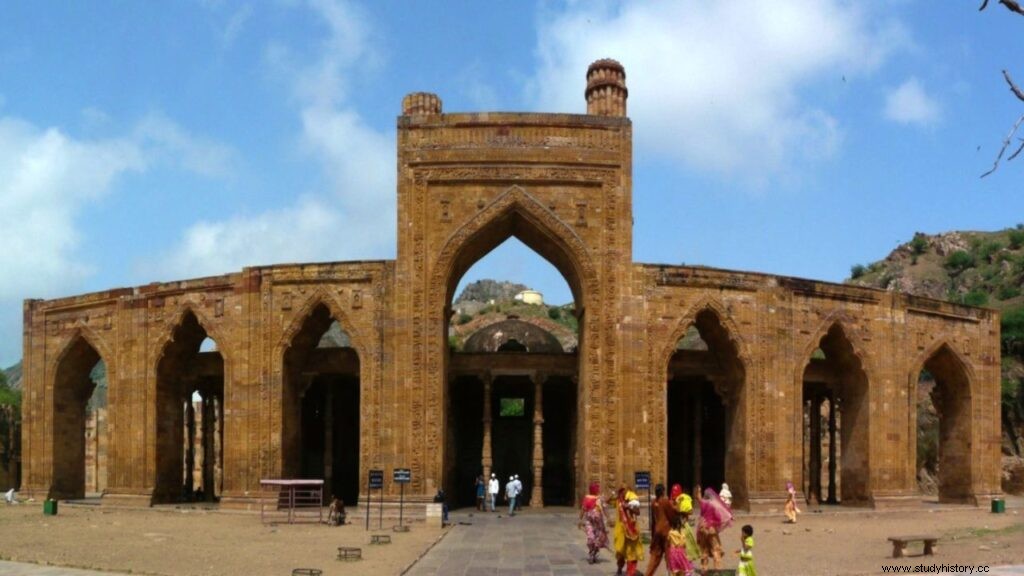
In this ruined building, 7 arches and 70 pillars have been made and the roof has also been brilliantly crafted. Earlier there was a very big Sanskrit school here. It is named Adhai Din Ka Jhopra because earlier three temples in the complex were converted into mosques within two and a half days. After the Second Battle of Terai (1192 AD), Mohammad Ghori defeated Prithviraj Chauhan and passed through Ajmer as a winner, he was so afraid of the temple here that he immediately destroyed it and ordered his slave Qutubuddin to build a mosque in its place. Diya and ordered to complete the whole work in 60 hours so that he can offer Namaz in the new mosque while returning.
25. Kali Mandir, Srinagar - now Khanqah-e-Mula
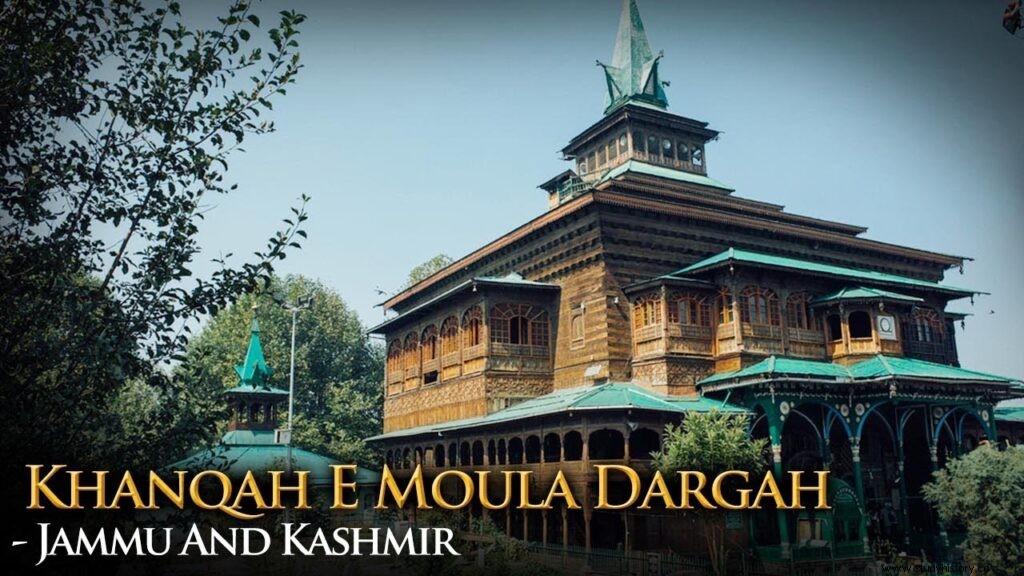
26. Vijay Sun Temple, Vidisha - now Bijamandal Mosque
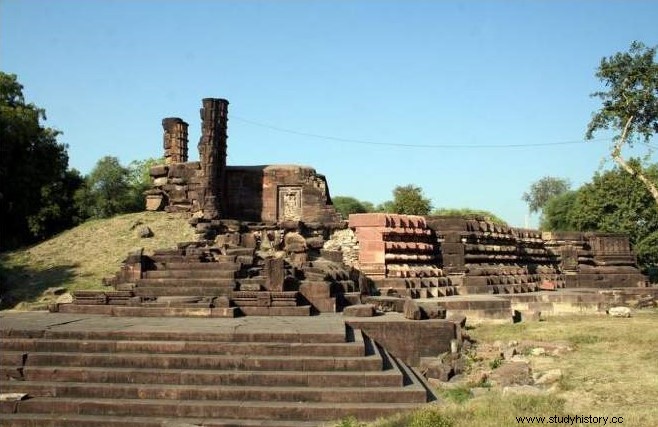
27. Atala Devi Temple, Jaunpur - Now Atala Masjid
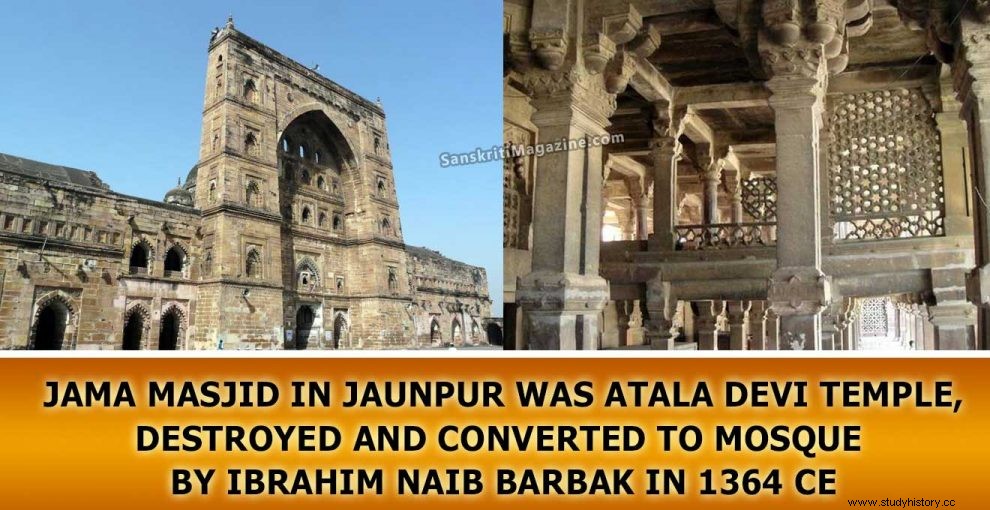
28. Shiv Mandir, Fatehpur Sikri - Now Salim Chishti's Tomb
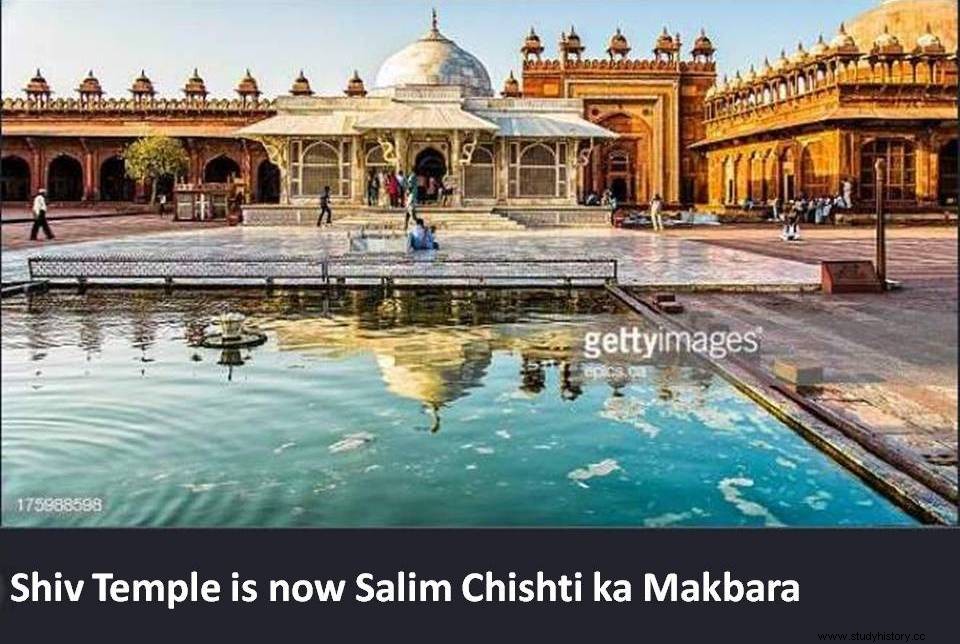
Historian Purushottam Nagesh Oak has called it a Shiva temple built for the family of Sikar Rajputs
29. Lakshmi Mandir, Hyderabad - now Charminar
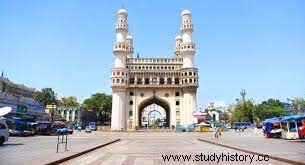
30. Vishnu Temple of Triveni - Hooghly, Bengal - now the mosque and tomb of Zafar Khan Ghazi

The complete history of Triveni Hooghly's Vishnu temple which is now called Zafar Khan Ghazi Mosque and Tomb can be read on the link below:
The above are just a few well-known examples. The reality is that there are thousands of such temples, monasteries, schools, etc., today there are mosques, tombs, madrasas, which you have to research and take this list forward and make it accessible to all the people for information.
Apart from this, in the first volume of the book "Hindu Temple:What happened to Them" written by Sitaram Goel, Arun Shourie etc., 2000 such mosques have been identified which were built by demolishing Hindu temples. This is also a list of only a few hijacked temples. इनमे पाकिस्तान और बांग्लादेश के मन्दिर या अन्य इमारतें जो अब मुसलमानों के कब्जे में है शामिल नहीं है.
बेहतर तो यह होता कि हिन्दुस्थान की आजादी के बाद भारत सरकार हिन्दू, बौद्ध, जैन इमारतों, मन्दिरों, पाठशालाओं आदि को भी मुक्त कर उन्हें हिन्दू, बौद्ध, जैन जनता को सौंप देती परन्तु मौलाना जवाहरलाल नेहरु जैसे हिन्दू विरोधी और मुस्लिम परस्त के हाथों में सत्ता चले जाने के कारण ऐसा नहीं हो सका. हिन्दुओं की अतिसहिष्णुता ही हिन्दुओं की कमजोरी रही है. हिन्दू जितना शांतिप्रिय बनने की कोशिश किये उन्हें उतना ही अधिक उदंडता और प्रहार का सामना करना पड़ा है. अतः हिन्दुओं, बौद्धों, जैनों को अतिसहिष्णुता और निष्क्रियता का त्याग कर अपने मन्दिरों, मठों और पाठशालाओं की मुक्ति केलिए लोकतान्त्रिक संघर्ष का मार्ग अपनाना चाहिए.
